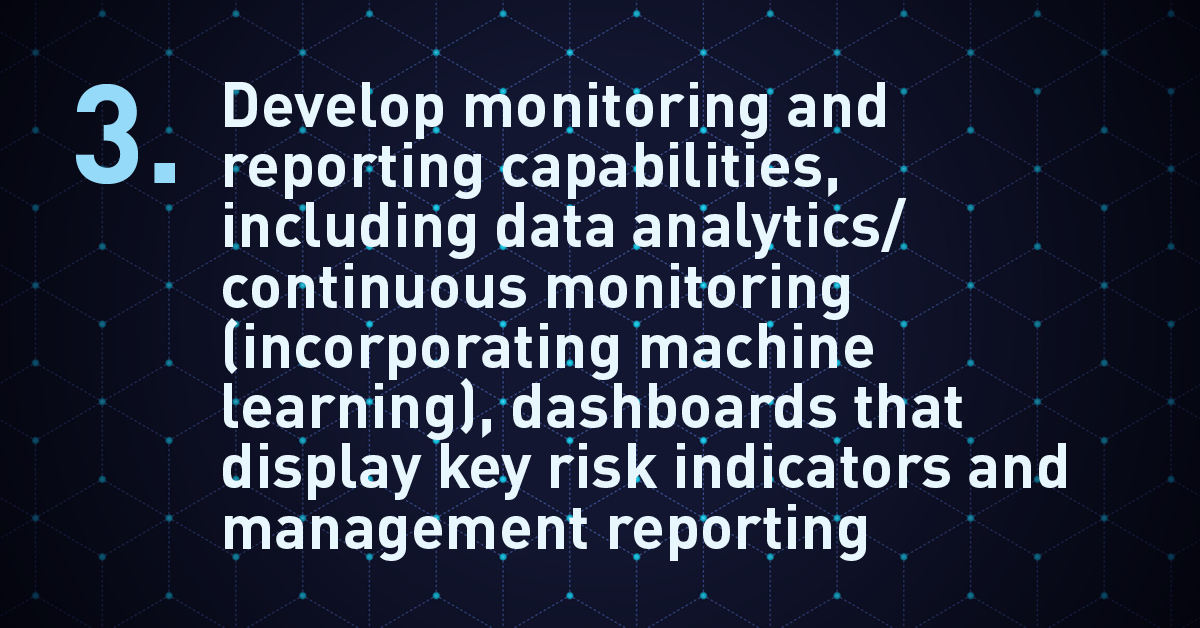The Paradox of AML Compliance and Cryptocurrency Regulation
Michael Canale and Joseph Sergienko
Banks are hesitant to touch cryptocurrency unless it is regulated like money. Here’s why they should prepare for when that happens.
In weighing how big a bet to make on cryptocurrency, financial powerhouses around the world have one central question:
Is cryptocurrency money?
The related uncertainty, specifically about how governments could answer the question, makes banks and financial institutions nervous. But they shouldn’t wait to put their regulatory houses in order or pass on the major opportunity before them. Those eager to make a virtual currency play can and should apply the anti-money laundering (AML) and compliance standards to cryptocurrency that they use for more traditional finance.
That has been the smart approach for a while, but it’s even more so now, given recent regulatory developments.
US regulators took an important step to regulate cryptocurrency in the closing months of 2019.
Cryptocurrencies are digitally manufactured, and with the distributed ledger power of blockchain, transactions occur automatically and anonymously. Trades occur without a middleman or clearing house, expediting the process, and proponents tout crypto’s security because transaction data is distributed. But the technology makes it easy to hide identities and illegal activity, creating a platform that can be exploited by the black market, criminals, terrorists and foreign governments. By the third quarter of 2019, cryptocurrency thefts, scams and fraud reportedly exceeded $4.4 billion, a huge spike from previous quarters.
Some of that jump could stem from a prior lack of reporting or traceability, but it clearly caught regulators’ attention. In November 2019, the Financial Crimes Enforcement Network (FinCEN) announced that the US government would begin strictly enforcing the “travel rule” when it comes to cryptocurrency. That meant cryptocurrency firms engaged in money service businesses—e.g., digital asset exchanges and wallet service providers—must verify their customers’ identities, identify the original parties and beneficiaries of transfers $3,000 or higher, and transmit that information to counterparties if they exist.
The travel rule was first applied to cryptocurrencies in 2013, but FinCEN’s aggressive posture last year shocked industry insiders, with executives noting that digital currencies have never been classified as money and the belief was that the travel rule does not apply to them.
These steps might upset cryptocurrency purists, considering that the technology was first intended to free currency from central authorities. But increased government enforcement is actually a good way to prompt banks and financial institutions to get into the action—leading to continued appreciation of crypto assets and virtual currencies’ wider use.
Movement on the travel rule wasn’t the only significant US regulatory event last year on virtual currency. The US joined countries around the world and began embracing regulation and enforcement of AML laws for virtual currencies. FinCEN, in its first enforcement action of this kind, imposed fines against a cryptocurrency trader for willfully violating the Bank Secrecy Act and noncompliance with standard AML practices.
It remains to be seen how rigorously the US government will enforce its new position on the travel rule, what penalties will come about and whether other financial regulations will apply to cryptocurrency—to say nothing of comprehensive global standards. While US movement would definitely help, a lack of consensus from world governments on whether cryptocurrency is legal tender with consistent AML and other compliance standards is just another reason why major financial players are hesitant to set up their own crypto exchanges.
Cryptocurrency risk can still outweigh rewards.
Cryptocurrency promises anonymized, secure transactions. But the anonymity is also what makes it attractive for use in criminal activities like theft, cybercrime, drugs or illegal goods, and it has the potential to fund terrorism, launder money and avoid taxes. Know Your Customer (KYC), Combating the Financing of Terrorism (CFT) and AML rules guide the global financial sector so that criminal activity can be monitored and prosecuted, but these rules stop at the digital divide.
By design, it is difficult to track customers, bank sources or the owners and originators of funds. Legal scholars in Australia quantified for the amount of fraud and criminal activity in a recent paper, concluding that approximately one quarter of all bitcoin users (25 percent) and close to half of bitcoin transactions (44 percent) in 2018 were associated with illegal activity.
Add to that the fact that virtual currencies are “mined” by individuals connected to servers all over the world, and the absence of regulations over who can mine or create currencies, and how currencies can be fairly traded leaves enormous potential for manipulation. Lack of regulation has produced an unstable financial environment prone to wild fluctuation and speculation—one of which financial institutions are wary.
In the global economy, any approach to cryptocurrency regulation must have international consensus. In this regard, many are watching China to see how it continues to negotiate its position on banning private cryptocurrency exchanges, while at the same time strongly hinting at the creation of its own national digital currency. Should China take further steps to launch its own centrally controlled national cryptocurrency, economists watching this space have likened it to the Space Race of the 1960s. Taking that step could solidify China’s reputation as the world’s leading economy of the future, giving them substantial power to control trading and manipulate pricing.
Is comprehensive cryptocurrency regulation on the horizon?
Whether China and regulators around the world fully embrace national digital currencies remains to be seen. Right now, the fact that cryptocurrencies are mined, acquired and traded outside of government oversight and the international monetary system is considered a key benefit for digital currency advocates, but it also could hold back cryptocurrency from wider use in the global economy.
Regulators might have no choice but to increase their involvement, though we believe it would take a significant event for more serious, comprehensive regulatory actions—actions that are far more reaching than FinCEN’s 2019 moves—to occur any time soon. If Facebook successfully launches its much-touted Libra currency and other large technology companies follow suit, such that a significant portion of the digital economy is based on virtual currency, that would likely prompt more involvement from the US Federal Reserve.
Of course, governments traditionally issue currencies and back their values. Their role in controlling monetary policy is a critical piece of their ability to act to combat economic downturns, inflation and trade wars. If that control came under serious threat from the private sector, governments would take action to preserve their control. Regulatory pressure would increase if cryptocurrency funds a large-scale terrorist event or causes a significant shock to financial markets.
At this point, governments are proceeding with caution, and financial institutions are following suit. But caution should be tempered with innovative thinking and an eye toward the future. Recently, Fidelity Investments announced its intention to open up custodial services for cryptocurrencies. Kathleen Murphy, personal investing president of Fidelity Investments, recently indicated in a CNBC interview that “while we embrace crypto in terms of trying to understand it and be innovative and thoughtful … We’re also very careful about where we offer [crypto services], so they’re not offered broadly on the retail platform.”
Financial institutions should prepare for what lies ahead:
Money’s continued evolution
A generation ago, it was impossible to think that customers would want service from branchless banks. A few generations before that, it was hard to imagine how the proliferation of credit could change the way we use money. Perhaps future generations will feel comfortable checking their digital wallet and keeping their entire net worth in digital currency. It is possible. But before cryptocurrency gains full adoption in mainstream finance, it will likely need the imprimatur of regulators.
Until then, smart financial institutions can increasingly get into the fray provided that they treat cryptocurrency as they would a traditional currency or tradable commodities and assets.
Four phases of KYC/AML
For cryptocurrencies to continue appreciating in value and gain widespread acceptance, virtual currency exchanges must adhere to four phases of KYC/AML compliance:
What kind of customers are allowed to trade? From where? In what amounts?
The exchange company must confirm that a customer meets the requirements established in the customer acceptance policy.
Continuous monitoring of transactions, identification and reporting of suspicious activity must be required.
Ongoing risk management is needed, including data analytics/continuous monitoring, dashboards that display key risk indicators and management reporting.







